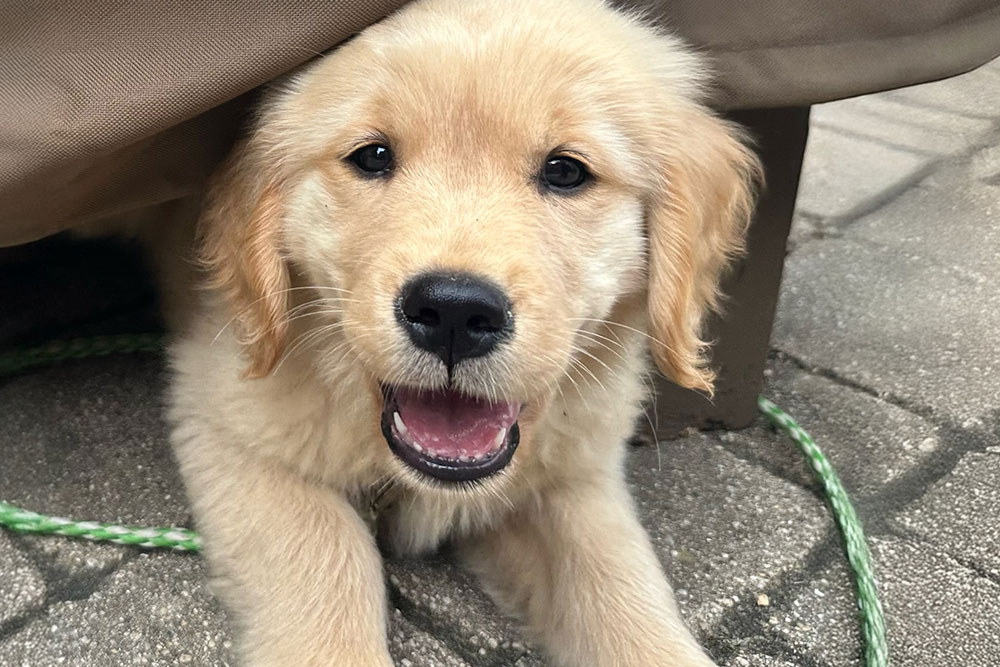
Baby Bella isn’t old enough for a comprehensive oral exam and cleaning yet, but her owners have started brushing her teeth with doggie toothpaste as part of her basic puppy training.
We’ve all been charmed by pets hiding their heads under a bed in a classic invisibility pose. After all, if they can’t see you, you can’t see them, right? Never mind their butts and back paws are sticking out and wiggling with excitement about their cool pet trick. That bed isn’t their only point of invisibility, though. Behind their toothy smiles lurk potential dangers that can be seen only with x-ray vision.
What? It’s true. “Roughly 60 percent of a pet’s mouth is invisible unless it’s revealed through a radiograph – a dental x-ray,” said Dr. Ellen Mueller. “There are many potential problems that can be hiding beneath the gum line. For example, we can identify broken or infected teeth, tooth root abscesses, bone loss from periodontal disease, retained baby teeth or abnormal tooth roots. We also find resorptive lesions, especially in cats.”
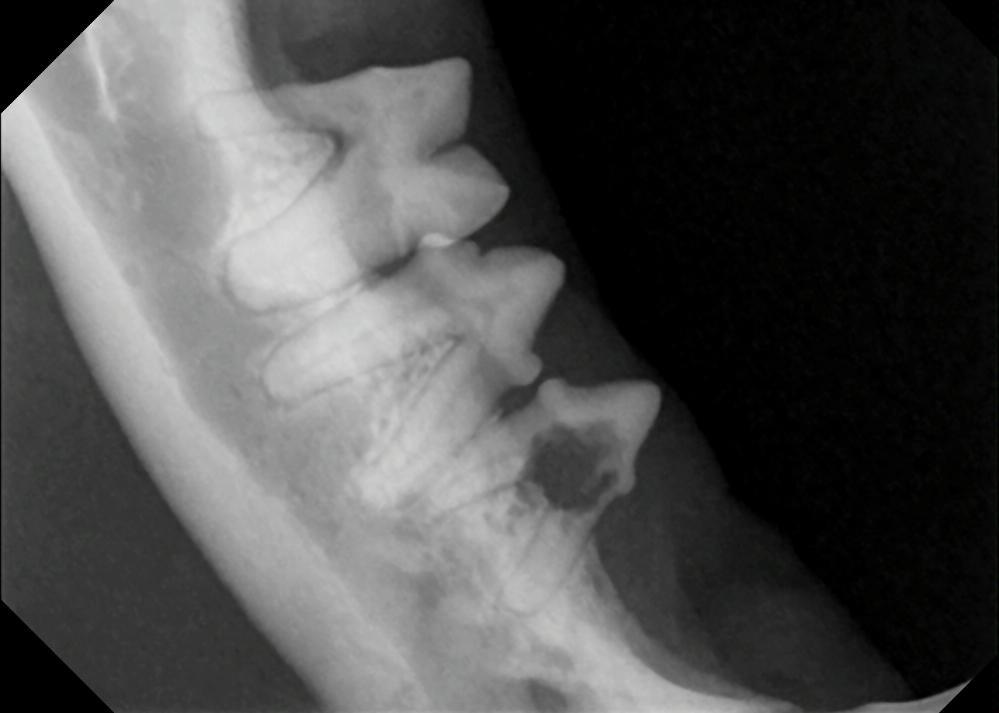
The dental radiograph shows a resorbing lesion on a cat's tooth.
Mueller explained there are many misconceptions about when pets need dental x-rays. “Some say their pets are eating fine, so there can’t be any problems. Others believe they need to get images only if they see a tooth appears to be broken. There are also those who fear anesthesia or radiation for their pets.”
None of those assumptions or fears are merited. According to VCA Animal Hospitals, more than 80 percent of dogs older than 3 have active dental disease of some type, and as high as 75 percent of them suffer from some type of periodontal disease. “Most don’t show obvious symptoms of mouth pain,” said Mueller, “so we need to be proactive in how we provide care.”
Dental radiographs are part of a routine dental exams and cleanings at Greendale Village Vet to ensure the doctors don’t miss any pathology during the full oral exam. Veterinarians also recommend them when tartar or gum recession is visible, before and after extractions and certainly when a pet appears to be having oral pain. “Having those images ensures all the problems will be addressed, even when they are invisible to our naked eye,” said Mueller.
To obtain images while keeping the pet safe and comfortable, anesthesia is required, but that is not something pet parents should fear. According to a paper published by the American Society for the Prevention of Cruelty to Animals, the mortality risks from anesthetizing healthy dogs and cats is very low. It is only 0.05 percent for pups and 0.11 percent for cats. The risks increase slightly if the pets are sick when they are anesthetized, but the overall risk is minimal, especially when considering the benefits of detecting and treating the health hazards the images can reveal.
Is radiation from x-rays dangerous for pets? No. Dental radiographs are conducted with small equipment and low-level radiation. “They are no more dangerous than the x-rays humans get from their dentists,” said Mueller.
Once the veterinarian has the images, she will interpret what they show and, together with the pet parents, determine what steps are next if a treatment plan is warranted. “Prevention is a very cost-effective way to keep pets healthy,” said Mueller.
“With early detection, treatments are less invasive. We like to think of radiographs as the instruments in our veterinary superhero toolbox. We use x-ray vision to see your pet’s invisibles, and that contributes to your pet’s overall good health, of course. What’s just as important, though, is identifying whether there are unseen conditions causing your pet pain, so we can put a stop to that.”
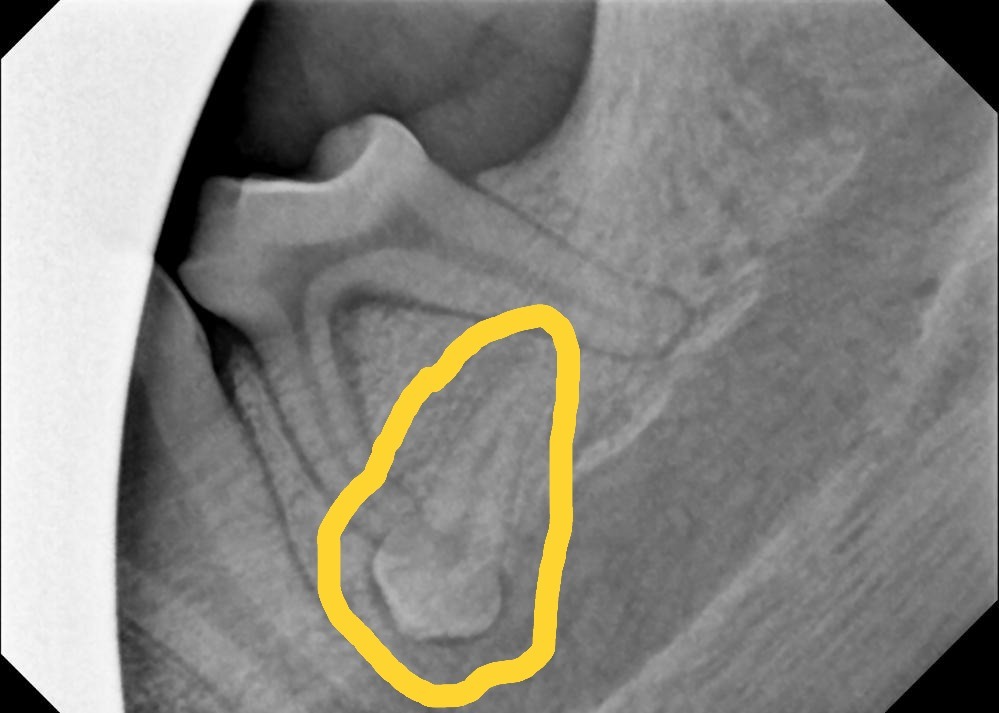
This image shows how a molar grew under rather than behind a tooth.
For information or to make an appointment, call Greendale Village Vet at 414-421-1800, or visit https://greendalevillagevet.com/.


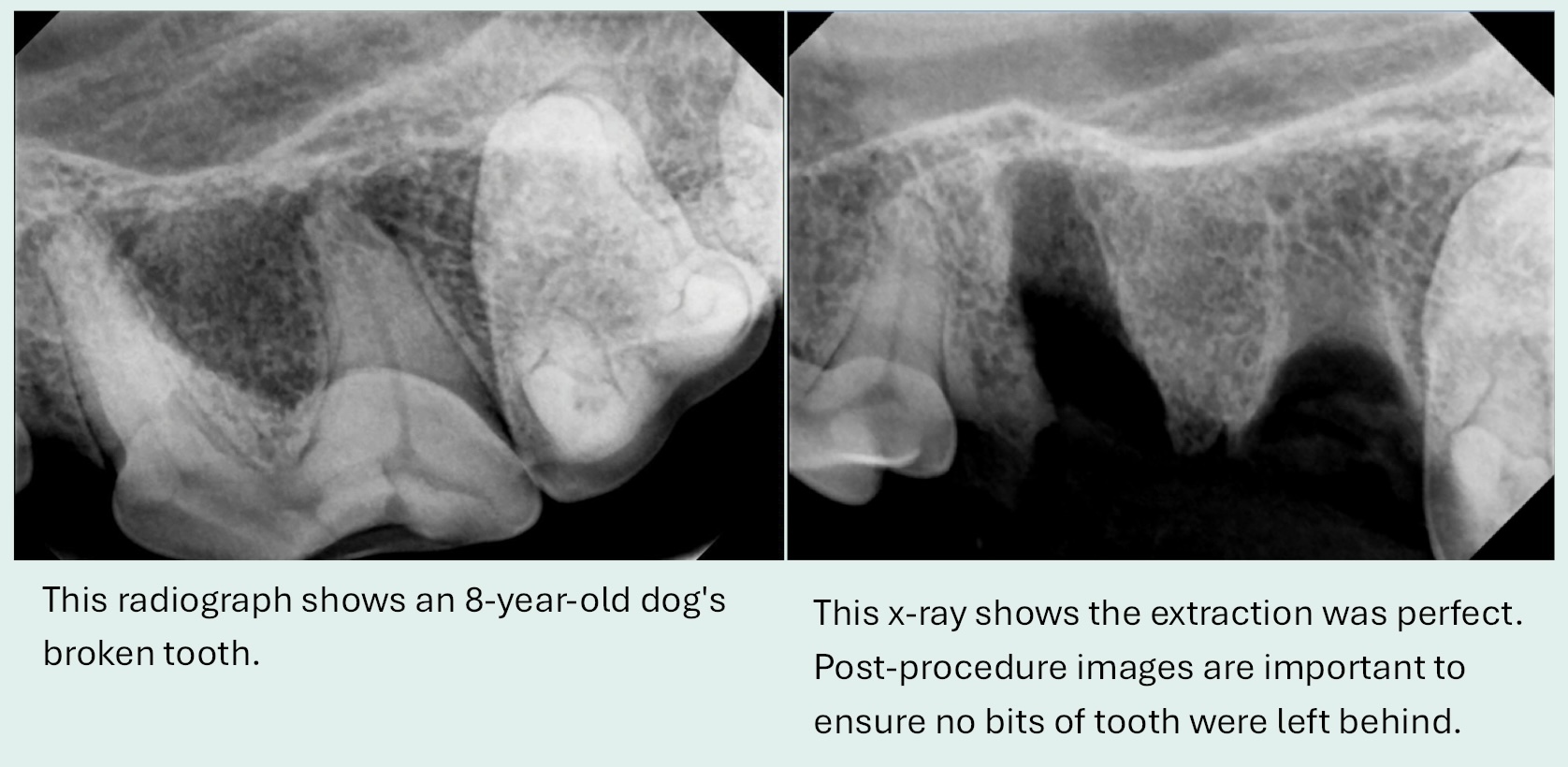
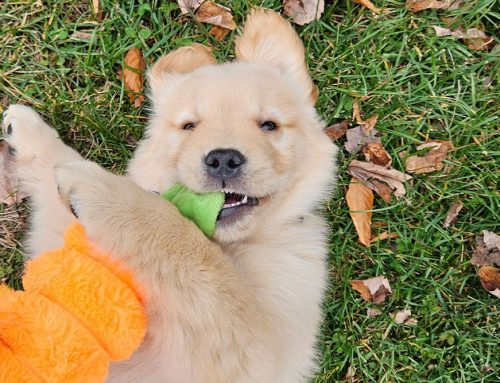
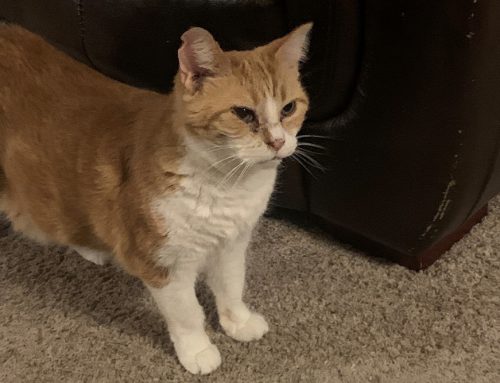
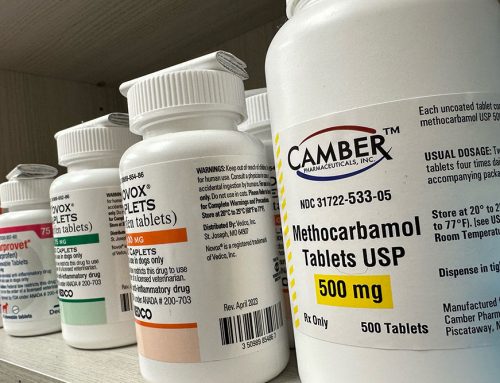
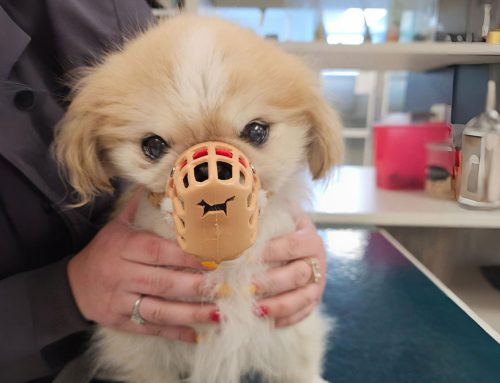
Leave A Comment